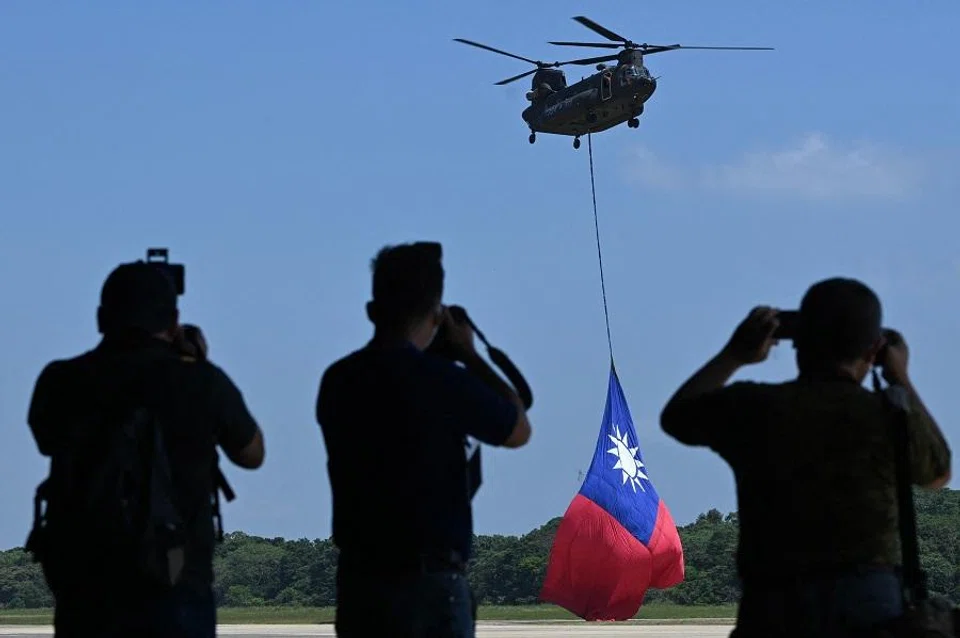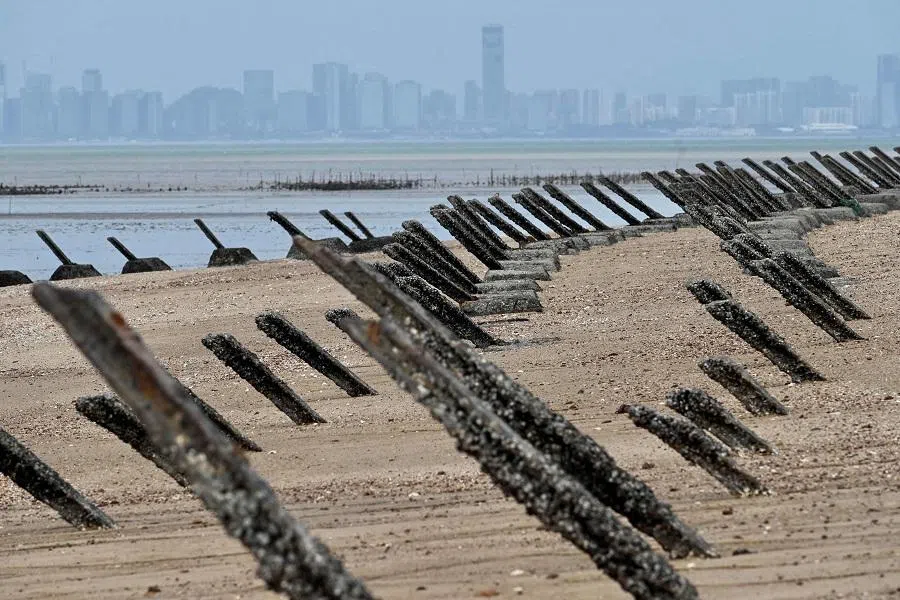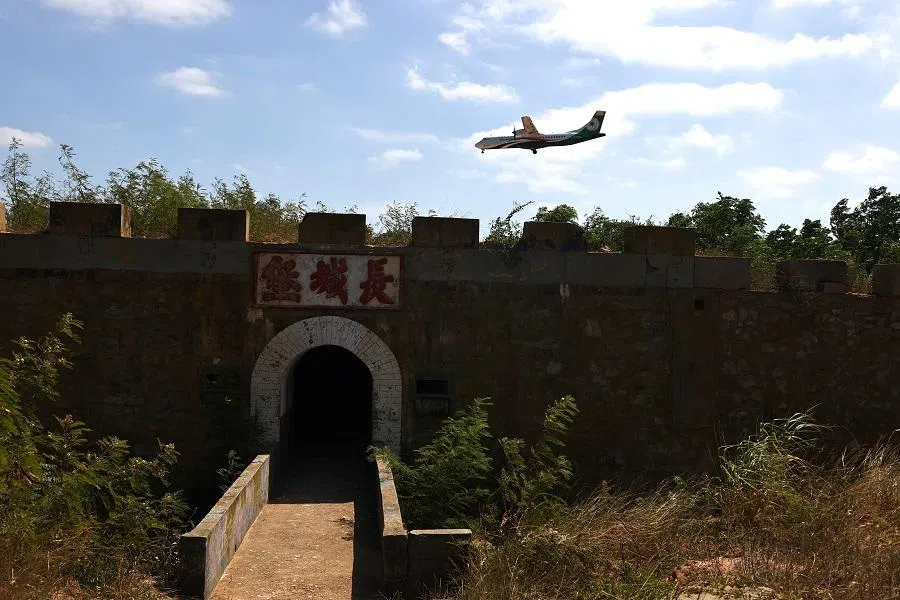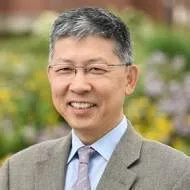Has the US shifted its position on Taiwan, again?
US academic Zhu Zhiqun notes that Beijing's "one-China principle" has remained largely unchanged while Taiwan's concept of cross-strait relations has morphed under the DPP to that of Taiwan being already independent. On its part, the US seems to be changing its stance, not least by adding Reagan-era, private assurances to Taiwan to the equation when defining its "one-China policy". Tough questions need to be answered about how Beijing can curb Taiwan independence without alienating the Taiwanese public, or how the US can support Taiwan's democracy without encouraging Taiwanese independence and dragging the US into a war with China.

Taiwan has quickly re-emerged as the most explosive issue between China and the US. US Secretary of State Antony Blinken's recent statement to support Taiwan's participation in the United Nations (UN) system and President Joe Biden's suggestion that the US has a rock-solid commitment to Taiwan raise serious questions about US policy toward Taiwan as well as US-China relations.
How did the US get involved in Taiwan?
The US involvement in Taiwan can be traced back to WWII. Taiwan was ceded to Japan by the Qing dynasty as a colony after the First Sino-Japanese war in 1894-95.
The 1943 Cairo Declaration and the 1945 Potsdam Declaration outlined the terms for Japan's surrender and the return of Chinese territories Japan had "stolen". With the US's support, the Republic of China (ROC) officially celebrated Taiwan's return on 25 October, 1945. 25 October became a public holiday called the Retrocession Day in the ROC.
Unfortunately, after the US failed to mediate between Chiang Kai-shek and Mao Zedong, the Chinese civil war resumed. Chiang's nationalist forces were losing, and the US was not going to stop the communist victory. On 1 October, 1949, Mao proclaimed the founding of the People's Republic of China (PRC). Chiang's ROC government and about two million followers retreated to Taiwan. Mao was prepared to send People's Liberation Army troops across the Taiwan Strait to "liberate" Taiwan. Meanwhile, tired of the corrupt Chiang regime, the US government was about to abandon Taiwan.
The Korean War that broke out on 25 June 1950 changed the US strategic calculation and saved Taiwan. President Truman sent the Seventh Fleet to the Taiwan Strait, essentially blocking the PRC's attempt to take Taiwan.
The 1982 US-PRC Joint Communique and the Six Assurances [given by the US to Taiwan] were clearly contradictory.

From 1949 to 1971, Beijing and Taipei engaged in a stiff competition for international recognition of who represented China. The US continued to support the ROC in Taiwan during that period. The global tide turned in 1971, when the UN passed Resolution 2758 to have the PRC replace the ROC as the representative of China.
The US shifted its position too. In July 1971 Henry Kissinger took a secret trip to China, paving the way for President Richard Nixon's historic visit to China. In February 1972 during Nixon's China trip, the two countries issued the Shanghai Communique, in which the text states that the US "acknowledges" that "all Chinese on either side of the Taiwan Strait maintain there is but one China" and the US does not challenge that position. This is the origin of the so-called "one-China policy".
In the 1979 US-PRC Joint Communique that officially established diplomatic relations between the two countries, Washington reaffirmed its acknowledgement of "one China". Many members of the US Congress were furious that Washington cut diplomatic relations with Taipei. To preserve US relations with Taiwan, Congress passed the Taiwan Relations Act (TRA) and President Jimmy Carter signed it into law in April 1979. The TRA has since guided the US's unofficial relations with Taiwan.
On 17 August, 1982, during the Reagan administration, the US and the PRC issued a third joint communique to map out plans to reduce US arms sales to Taiwan, leading over a period to the final resolution of the issue. On the same day, the US government privately gave Taiwan Six Assurances, including not setting a date to end arms sales and not consulting with Beijing regarding arms sales. The 1982 US-PRC Joint Communique and the Six Assurances were clearly contradictory.
What is the status quo of Taiwan-mainland China relations?
The PRC's position or definition of the status quo has been consistent. Beijing believes that despite the separation of Taiwan and mainland China, which was caused by the Chinese civil war, China's sovereignty and territorial integrity remain unchanged. And there is only one China, including the mainland and Taiwan. Beijing also states that Taiwan must be unified with the mainland, preferably by peaceful means, but it does not rule out the use of force.
Taiwan's position has been evolving over the decades.

Taiwan's position has been evolving over the decades. Both Chiang Kai-shek and his son Chiang Ching-kuo followed "one China". After Chiang Ching-kuo died in 1988, the Kuomintang (KMT) under Lee Teng-hui's leadership continued to follow "one China". Lee set up the National Unification Council in 1990 to outline the three phases for unification. Officials from the two sides of the Taiwan Strait met in Hong Kong in 1992, out of which came the term "1992 Consensus" - both sides agree there is only one China, but the meaning of "one China" could be different. However, in 1999, Lee proposed that relations across the Taiwan Strait were "special state-to-state relations" departing from "one China".
The pro-independence Democratic Progressive Party (DPP), which was formed in 1986, first came to power in 2000. The KMT returned to power in 2008. The KMT has continued to follow the "one China" ROC Constitution. In 2016, the DPP's Tsai Ing-wen was elected and in 2020 she was re-elected, greatly helped by protests in Hong Kong. The DPP and Tsai Ing-wen's position is that Taiwan is already independent and China and Taiwan do not belong to each other.
The US has always opposed unilateral change to the status quo, but the US interpretation of the status quo is vague and confusing. US officials make a distinction between Beijing's "one-China principle" and America's "one-China policy". Beijing's "one-China principle" refers to the position that there is only one China, Taiwan is a part of China, and the PRC is the sole legitimate government of all of China. Most countries and the UN follow this principle.
Emphasis on Six Assurances a change in US policy?
America's "one-China policy" has been based on the three US-PRC Joint Communiques and the TRA. However, Washington has recently added the Reagan-era, private Six Assurances to Taiwan to the equation when defining its "one-China policy". One wonders if this is a change to the status quo.
The US has consistently stated that it does not support Taiwan independence and does not follow a policy of "one China, one Taiwan" or "two Chinas". However, the US government has significantly upgraded "unofficial" relations with Taiwan in recent years.

US officials consider the PRC's recent aggressive military activities around Taiwan as a challenge to the status quo. Surprisingly, they do not consider the DPP government's abandoning of "one China" and the "1992 Consensus" as a change to the status quo. The US has long insisted that the cross-Taiwan Strait conflict must be resolved peacefully and be acceptable to people on both sides of the Taiwan Strait. But more recently, the US government has emphasised that cross-strait differences should be resolved with the consent of people in Taiwan, as if the opinion of people on the mainland is not relevant any more.
The US has consistently stated that it does not support Taiwan independence and does not follow a policy of "one China, one Taiwan" or "two Chinas". However, the US government has significantly upgraded "unofficial" relations with Taiwan in recent years. What exactly is Taiwan's status under America's "one-China policy"?
Dilemmas and dangers in the Taiwan Strait
Beijing, Taipei and Washington have conflicting interests and goals, which makes peaceful resolution of the Taiwan issue extremely difficult.
Beijing is worried that Taiwan is slipping away from China. While it prefers peaceful unification, Beijing has vowed to crush Taiwan independence at all costs. But the more pressure the PRC exerts on Taiwan, the more resentful the Taiwanese become, and the less likely unification will be.
How can the US support Taiwan's democracy without encouraging Taiwanese independence which will drag the US into war with China? How can the US protect Taiwan's people and way of life without turning Taiwan into a chess piece in the US-China power game?

For example, Beijing continues to block Taiwan's participation in the World Health Organization as a way to punish the DPP government, but it has alienated many Taiwanese who do not like Beijing's intimidation. China's behaviour has ironically consolidated support for the DPP. How to curb Taiwan independence without hurting the Taiwanese public is a real dilemma for Beijing.
The DPP government has categorically rejected "one China" as something Beijing imposes on Taiwan. The DPP government has stated that the two sides should engage in a meaningful dialogue based on parity and without "one China" as the precondition. However, by claiming that Taiwan is already independent or Taiwan and China do not belong to each other, the DPP government is imposing its own precondition that Beijing simply cannot accept.
The US will help Taiwan maintain "a sufficient self-defence capability" based on the TRA. But the TRA is not a defence treaty and the US is not obligated to defend Taiwan. How can the US support Taiwan's democracy without encouraging Taiwanese independence which will drag the US into war with China? How can the US protect Taiwan's people and way of life without turning Taiwan into a chess piece in the US-China power game? Is the US ditching its decades-old commitment to "one China" at the risk of military confrontation with China? Such serious questions are not publicly discussed and debated in the US.
Today's DPP has become more sophisticated and subtle in pursuing its agenda. It has dominated narratives about Taiwan and has framed the cross-Taiwan Strait dispute as "democracy versus autocracy", which easily appeals to a global, particularly Western audience. However, those who know the history and complexity of the Taiwan issue should not be misled to believe this is so simple. Ultimately, the American people must be fully informed of the dangers and difficulties involved, based upon which they can decide whether they wish to sacrifice their sons and daughters in a war with China over Taiwan.
Related: Taiwan is America's best asset against China, but for how long? | Taiwan's unequal status in US-Taiwan trade talks | Will the Taiwan Strait issue be internationalised under Biden? | More mainland Chinese elites supporting armed unification with Taiwan: A cause for concern? | How is mainland China planning to achieve reunification with Taiwan, when a common history no longer holds the same significance? | Tsai Ing-wen's comments on cross-strait relations: Brash or brilliant?

![[Big read] Paying for pleasure: Chinese women indulge in handsome male hosts](https://cassette.sphdigital.com.sg/image/thinkchina/c2cf352c4d2ed7e9531e3525a2bd965a52dc4e85ccc026bc16515baab02389ab)


![[Big read] How UOB’s Wee Ee Cheong masters the long game](https://cassette.sphdigital.com.sg/image/thinkchina/1da0b19a41e4358790304b9f3e83f9596de84096a490ca05b36f58134ae9e8f1)
